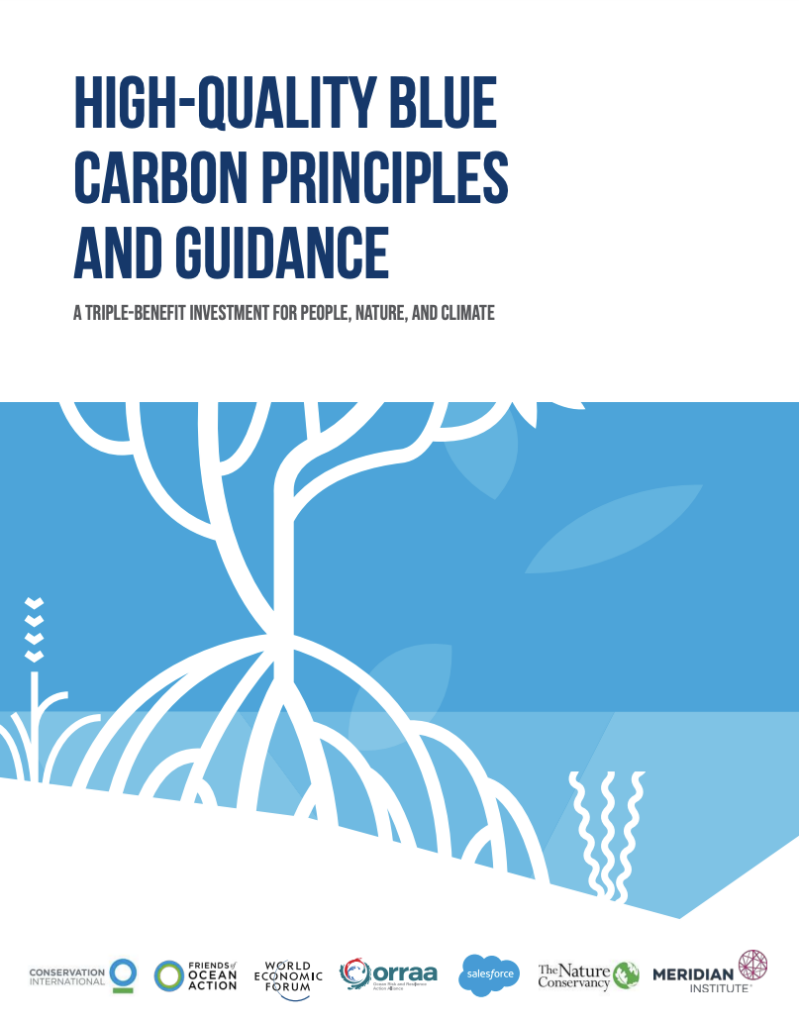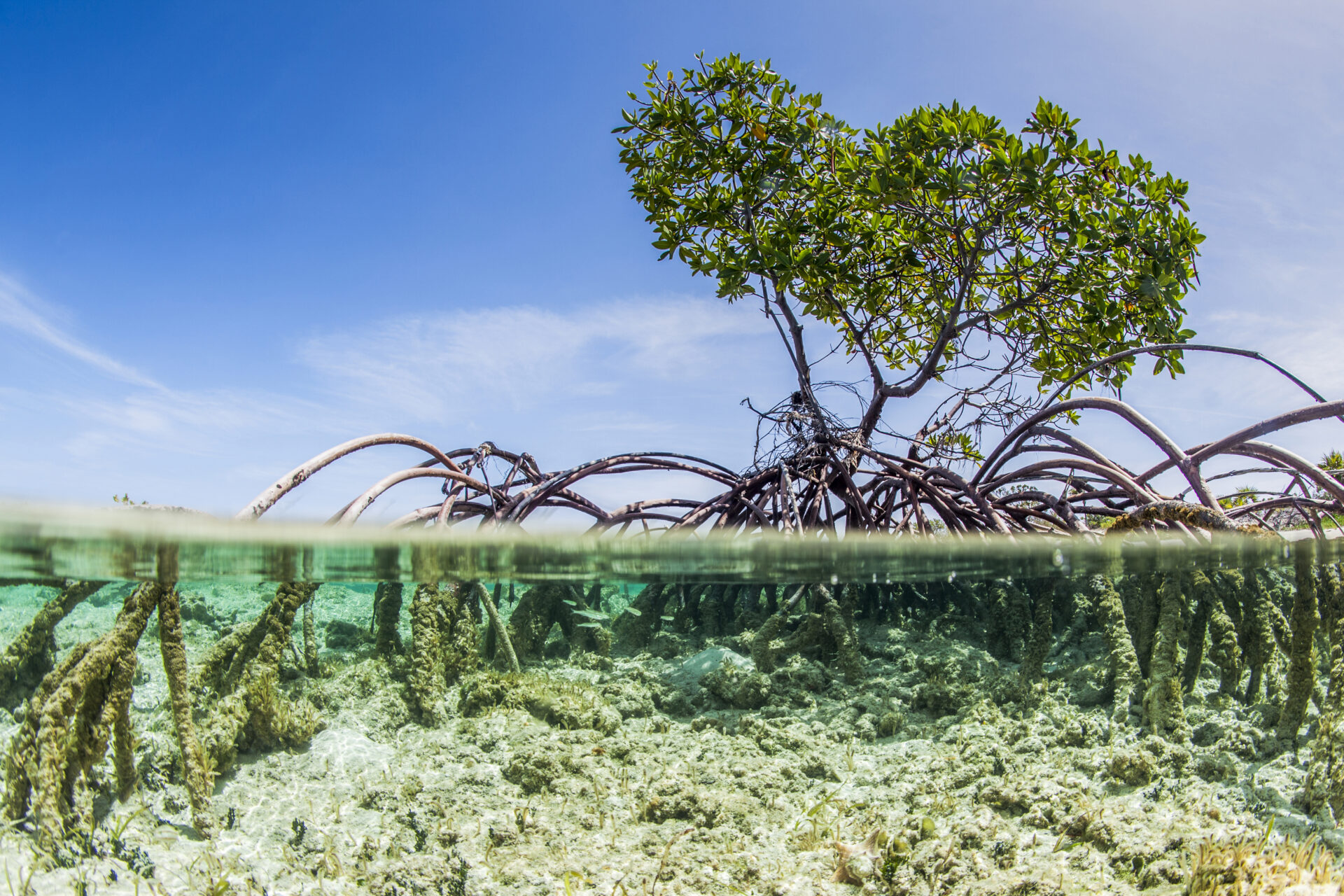High-Quality Blue Carbon Principles and Guidance
The Ocean Risk and Resilience Action Alliance (ORRAA), Salesforce, the World Economic Forum (WEF) Friends of Ocean Action, The Nature Conservancy, Conservation International and Meridian Institute launched the High-Quality Blue Carbon Principles and Guidance at the UNFCCC’s COP27. In 2023 we organised a Solution Lab to further discuss challenges and success stories of implementing high-quality blue carbon projects. The report on this can be viewed here.
More than a year after the launch of the principles, we confirm our commitment and invite buyers, investors, producers, and enablers of blue carbon projects to join this groundbreaking global effort. The participation of all parties is crucial as we navigate the intersections of environmental conservation, climate change, community empowerment, and sustainable finance.
At the heart of this initiative are “The High-Quality Blue Carbon Principles and Guidance”, a clear and concise guide outlining what ‘high quality’ entails for blue carbon projects and credits. The five core principles are: 1) Safeguard Nature; 2) Empower People; 3) Employ Best Practices; 4) Operate Locally; and 5) Mobilise High-Integrity Capital. Further details can be found in the principles and guidance document.
These principles reflect a commitment to excellence and sustainability, ensuring that blue carbon initiatives achieve the best outcomes for people, nature, and climate. By collectively adhering to these principles, we can create a global network of high-quality blue carbon projects and investments that serve as a beacon of sustainability and resilience.
As an Early Adopter, we invite all parties involved in blue carbon projects to:
- Demonstrate leadership by adopting and adhering to the principles and guidance to help align the market around high quality.
- Develop an action plan for using the guidance.
- Promote the guidance and promote being an early adopter.
- Share how you are using the principles and guidance to amplify your impact.
- Harness and contribute your ‘superpowers’ to progressing high-quality blue carbon (e.g. philanthropy, communications, purchasing power, advocacy, networks, etc.)
To support the adoption of the principles, download the Early Adopters Kit. You will find:
- Action Planning Guide: An action planning guide that extracts key actions for various principles or stakeholder groups to enable easy integration of principles into action plans.
- Internal Promotion Guide: A 12-step guide to support internal promotion of the HQBC P&G within organizations.
- External Promotion Guide: A 10-step guide to support external promotion of the HQBC P&G with stakeholders.
- Communications Tools: a set of tools and templates to facilitate impactful communications about the HQBC P&G, including an infographic, social media posts and hashtags, website text, a slide deck, talking points, and a case studies contacts list.



